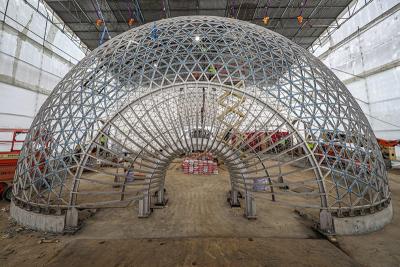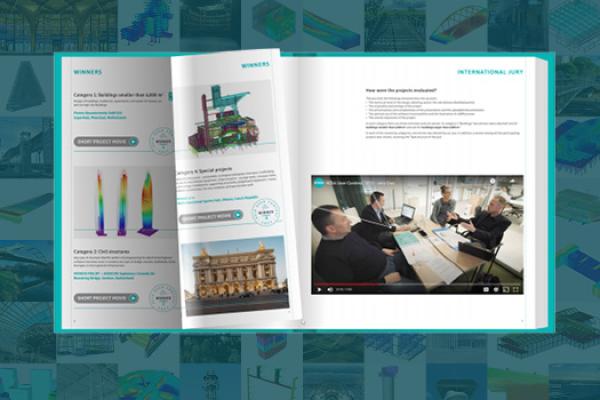
Details of Showcase Project: The Glass Dome at Albert Square, Knokke
- Country Belgium
-
Software
- SCIA Engineer
- Construction date 29/06/2023
The Glass Dome on the Albertplein in Knokke is a 7-metre-high glass and steel structure with a unique ‘jigsaw’ without screws or welds. Advanced 3rd-order non-linear analysis with SCIA Engineer software provided stability and innovation.
Project Overview:
Static Office: Jan de Nul
Architect: Philippe Samyn
General Contractor: Jan de Nul
In the heart of Knokke, a coastal city in Belgium, a revolutionary glass and stainless steel dome with a 7.0-meter radius now crowns Albert Square, marking a new chapter in architectural and structural innovation. This iconic structure is part of a broader project to address the city’s parking troubles, utilizing the underground space for a 150-space car park and transforming the square above into an attractive public space.

The dome's structure is unlike any seen before. Its glass pavilion is assembled without traditional welding or screws; instead, the steel parts are connected through a unique 'jigsaw' method, where individual rods are joined using male-female joints. This approach not only enhances the aesthetic appeal but also presents a remarkable engineering challenge.
From the beginning, accurately modelling the boundary conditions, such as the rotational and translational stiffness of the rod connections, was crucial. Simplifying these complex conditions while maintaining precision required extensive laboratory testing to determine the correct rotational stiffness values. As the model developed, additional challenges arose, including determining the most critical load combinations and ensuring the stability of this highly flexible structure.

To direct these complexities, a 3rd order nonlinear analysis was conducted, incorporating initial imperfections to simulate real-world conditions. The use of SCIA Engineer was essential in this process. Key features of the software that facilitated the successful design included:
Spreadsheet input: A helper script in Excel allowed the wind load to be introduced as a nodal load directly into the model.
Third order nonlinear analysis: Critical for ensuring the stability of the elastic structure, considering the nonlinear connections at each member's end.
Steel member assessment tools: Enabled rapid and accurate assessments, crucial for meeting the project’s tight timelines.
Jan De Nul Group shapes both water and land. They enable the production of offshore energy and maintain the depth of waterways. They build new ports and create extra land. And they realise complex infrastructure works and erect any type of building.
SCIA has been organising user contests for years in which all kinds of projects can participate.
Curious about our last contest?
New: Now stacked with many embedded project and testimonial videos
